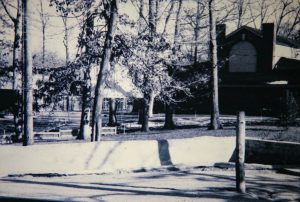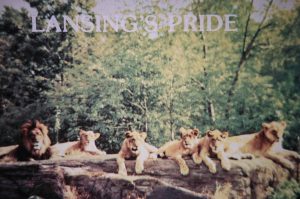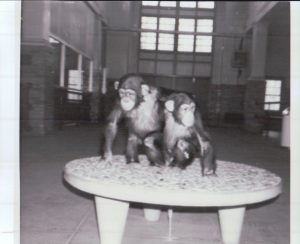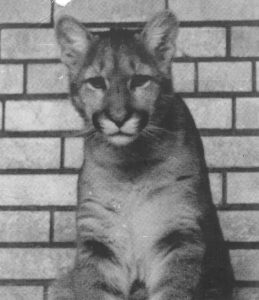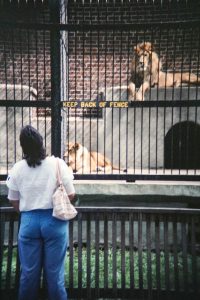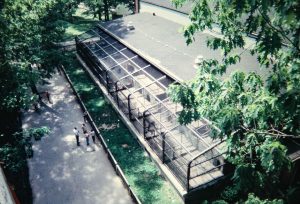As the animal collection grew at the zoo in the 1920s, there was a need for a new animal building. Funds were put in the city budget in the late ‘20s and construction completed in 1930. It was known as the Lion House. It was – and continues to be – a significant element of the zoo’s core.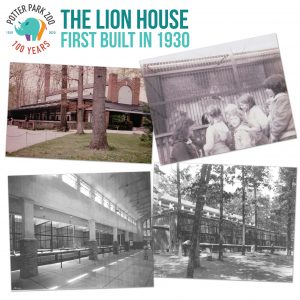
Note: As mentioned, the funding came from the city. The building’s construction was not part of the federal Works Progress Administration (WPA), which operated from 1935-1943 (Some structures at the zoo were part of that program and will be addressed in future blogs).
The layout of the new building was modeled after the Carnivora Building at the Toledo Zoo (now the Carnivore Café). Typical of the time, the animal spaces were small, concrete, and barred. The cats were housed on the current primate side, while the primates were on the current cat side. The cats also had small outdoor areas, while the primate side had no outdoor spaces.
As an indication of exhibit sizes, architectural plans showed that there were eight exhibits across each side of the original layout, with the two in the center of each side about twice the length of the smaller end enclosures.
The great hallway was an open area for visitors, stretching between two sets of double doors that served as entrances/exits on either end of the building. There were stone benches, which can now be found in the campground area of the zoo. The basement area was shaped like a “U,” with a work area for zookeepers to prepare food for the animals as well as halls for storage.
Among the memorable births in the building were Sonny and Butch, twin African lion cubs, born in 1976, and Magic and Special K, mountain lions that were born in 1979 and named for two of Michigan State’s Championship basketball players.
In 1986 Potter Park Zoo was accredited by the American Association of Zoological Parks and Aquariums (AAZPA), later renamed the Association of Zoos and Aquariums (AZA). The standar
ds for accreditation reflected the best science and animal care thinking and prompted changes in Potter Park Zoo and in zoos around the country. The renovation of the Lion House in the late 1980s was one of those changes as well as how the animals were matched for breeding.
Before the work on the building began, the spider monkeys moved into a new exhibit on grounds, and the remaining residents were sent out to other zoos. The renovation was completed in 1989, and the building was renamed the Feline/Primate Building. There were fewer exhibits, space for each animal was increased, and natural outdoor areas were created along with holding areas in the basement. Many other additions created more positive animal welfare at the zoo. The visitor experience was improved as well with carpet and glass barriers, and it definitely smelled better.
When new animals arrived in the building, breeding practices changed,
reflecting the practices of modern zoos. Subsequent efforts would be part of the AAZPA’s (later AZA) Species Survival Plans (SSP) in order to match the animals across accredited zoos to produce healthy, genetically diverse zoo populations that are sustainable for the long-term future.
Over the years the big cats residing in the building included tigers, leopards, mountain lions, and African lions. Primates exhibited included various monkeys, gibbons, lemurs, and even c
himpanzees in the 1960s and 1970s.
Do you have a story about the Lion House, or Feline/Primate House, at the zoo? Share your story. Go to “Contact” on this website and leave a message in the drop-down menu to “What is your message regarding?” – “Story Submissions for Zoo Centennial.” Please include the decade or general time frame that applies to your story.
- Lion House at Potter Park Zoo, completed in 1930.
- An old postcard with the title “Lansing’s Pride”
- Chimpanzees at Potter Park Zoo (1960s and 1970s)
- Mountain lion at Potter Park Zoo (1970s)
- View of outdoor viewing at the Lion house before the 1989 renovation.
- View of outdoor viewing at the Lion house before the 1989 renovation.

